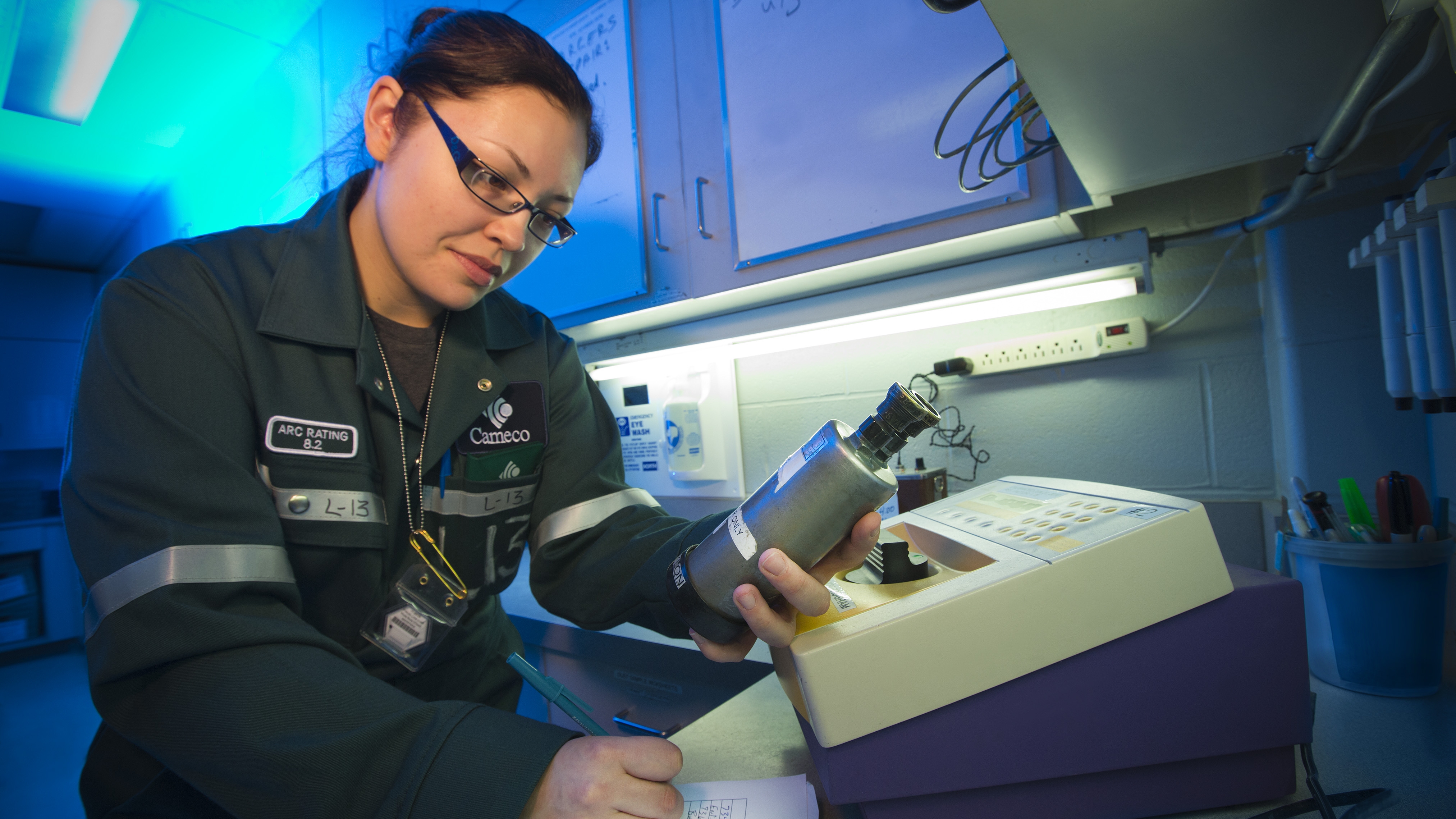Monitoring

Extensive monitoring around all our northern Saskatchewan operations continues to show no significant impact on the surrounding environment.
Cameco operational monitoring
Comprehensive monitoring programs are in place at all Cameco operations in northern Saskatchewan to ensure our environmental protection programs remain effective. Samples of water, air, soil and sediment, plants and fish are collected from numerous locations around the sites and tested to confirm that environmental protection systems are effective. Monitoring results are submitted to federal and provincial regulatory authorities.
Cameco laboratories process tens of thousands of samples each year. Representative samples are also sent to independent labs for verification of results.
The extensive monitoring undertaken at the all Cameco operations continues to show that the environment and human health in the vicinity of our operation remains protected.
Cameco’s northern Saskatchewan monitoring results are publicly available at:
Regional monitoring
Cameco also supports independent regional monitoring downstream of its Saskatchewan operations to ensure there are no cumulative effects on the regional watershed. The Eastern Athabasca Regional Monitoring Program (EARMP) was established in 2011 under the Province of Saskatchewan’s Boreal Watershed Initiative. This industry-government partnership is supported by stakeholders including Cameco, Orano, the Saskatchewan Ministry of the Environment and the Canadian Nuclear Safety Commission.
The 2022 10-year anniversary of the EARMP program provided an opportunity to summarize and highlight the positive findings over the past decade.
Monitoring of streams and lakes downstream of our mines and mills in northern Saskatchewan has demonstrated that the receiving environment remains protected. In addition, air monitoring results have shown that we do not influence regional air quality and that ambient concentrations at our surface lease boundaries are the same as background.
For more information, please see EARMP’s most recent reports:
To view older reports please visit the EARMP website.
Community monitoring
Starting in 2000, the Athabasca Working Group (AWG) Environment Monitoring Program was in place across all of the Athabasca Basin. This monitoring program regularly demonstrated that country food samples collected in nearby Athabasca Basin communities were not negatively influenced by active uranium mining and milling operations in the region.
In 2018, the AWG program became the Community Based Environmental Monitoring Program (CBEMP). The benefit of this program is that each community in the Athabasca Bain will have a specific, focused study that reflects what they eat, how much they eat and generally where the food comes from. Accompanying a dietary survey, the community-based sampling program includes the collection of water, fish and wildlife samples from areas identified by community members. Sampling is conducted by CanNorth, an independent First Nations environmental services company, and samples are analyzed by the Saskatchewan Research Council (SRC).
CBEMP results have consistently indicated that country foods identified by community members from the Black Lake First Nation, the Hamlet of Stony Rapids, Fond du Lac, the Hatchet Lake First Nation and Wollaston Lake and, most recently in Uranium City and Camsell Portage remain safe for consumption.
In 2022, a Human Health Risk Assessment (HHRA) was completed based on information collected through the CBEMP. The HHRA provides an assessment for each community, based on their specific dietary rates and country food information. The HHRA results show that community members should continue regularly eating locally harvested fish, wild game, berries, and plants. CBEMP summaries have been updated and include community specific HHRA results.
For more information:
Community Based Environmental Monitoring Program (CBEMP)
Former AWG Environmental Monitoring Program results:
